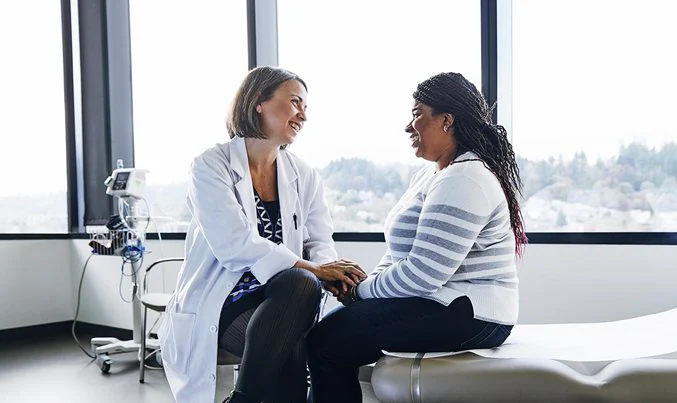Finding a lump in your breast or noticing changes in your body can be a cause for concern, but it doesn’t always mean something is wrong. However, being aware of the early signs of breast cancer is crucial for early detection and effective treatment. While breast cancer symptoms can vary widely, recognizing subtle changes early on can make a big difference. In this article, we’ll guide you through how to detect breast cancer early by highlighting common breast cancer warning signs, breast cancer symptoms, and what you should look for when doing a breast cancer self-exam. We’ll also dive into the breast cancer screening guidelines and other essential tips for detecting breast cancer in its earliest stages.
Recognizing Common Breast Cancer Symptoms
Breast cancer symptoms can present in various ways. Some women may experience a breast lump, while others notice changes in their skin or feel pain. The first step in breast cancer early detection is knowing what to look for:
- Breast lump symptoms: Lumps that are hard, painless, and immobile may signal potential breast cancer. However, not all lumps are cancerous. Always have a lump checked by a healthcare professional.
- Nipple discharge causes: If you notice unusual discharge, especially if it’s bloody or clear, it could be a sign of an underlying issue, including breast cancer.
- Breast skin changes: Redness, dimpling, or thickened skin on your breast could indicate breast cancer. These changes may sometimes resemble the skin of an orange (peau d’orange).
- Breast pain and cancer: Although breast pain is more commonly linked to non-cancerous conditions, persistent pain in a specific area of the breast should not be ignored.
How to Detect Breast Cancer Early
Being proactive about breast cancer detection methods can significantly increase your chances of early diagnosis. Regular breast cancer self-exams are a vital part of this. Check for any changes in your breasts, including lumps, texture, or size. If you notice anything unusual, make sure to see a doctor for further evaluation.
- Breast cancer screening guidelines recommend regular mammograms, especially for women over the age of 40 or earlier if you have a family history of breast cancer or breast cancer risk factors.

What You Need to Know About Breast Cancer Stages
Breast cancer stages and symptoms can vary from person to person, and early-stage cancers may not have clear symptoms. The breast cancer diagnosis process typically involves a physical exam, imaging tests like mammograms, and biopsies. Early detection plays a critical role in determining the stage of cancer and the treatment plan.
Additional Tips for Early Detection
- Breast cancer awareness signs include knowing your risk factors. Family history, genetic mutations like BRCA, and personal health history increase your risk.
- Breast cancer prevention strategies include regular exercise, a balanced diet, limiting alcohol, and avoiding smoking.
- Breast cancer symptoms in young women might be different from those in older women. Young women often have denser breast tissue, which can make lumps harder to detect on mammograms.
Busting Myths About Breast Cancer
There are plenty of breast cancer myths and facts that can confuse women about their risks. For example, having a breast lump doesn’t automatically mean cancer, and not all breast cancers form lumps. Regular screening and knowing your body are the best ways to stay informed.
Support and Resources
If you’re worried about breast cancer symptoms, it’s essential to consult with a healthcare professional. There are also numerous breast cancer support resources available to help you understand the diagnosis process and emotional aspects of the condition. Don’t hesitate to reach out to support groups or online communities.
By being proactive with early signs of breast cancer and following the right breast cancer early detection tips, you can take control of your health. Remember, regular exams, understanding your body, and seeking medical advice when needed are essential steps in staying healthy.
For more related articles, Click here



